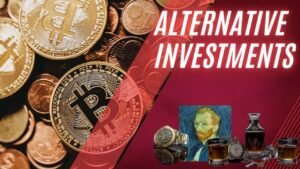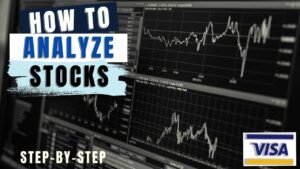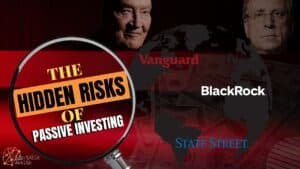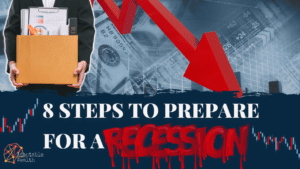

The current economic & political environment is becoming increasingly hostile to your freedom, wellbeing, & money. Inflation is eating more than 10% of your savings[1]. Most retail investors are overallocated to stocks & bonds at a time when it feels like both markets are on the brink of collapse. The inevitable move to a cashless society & central bank digital currencies is well under way.
So, what can you do about it?
What are some alternatives to stocks, bonds, & other traditional investments?
Summary
- Alternative Investments include any asset that is not a public stock, bond, fiat currency or strategy using any of those
- Reasons to Consider Alternatives to stocks, bonds & other traditional investments:
- Low Interest Rates & Overvalued Traditional Assets
- Inflation Hedge
- Potential for Higher Returns
- Yield/Cash Flow
- Tax Arbitrage
- Diversification
Risks of Alternative Investments:
- Poor Due Diligence
- Opaque Markets (Limited or No Transparency)
- Poor Liquidity
- Diversification May be a Mirage
What Allocation % is Right?
- Allocation is Highly Personal
- High Net Worth Individuals allocated 50% of Their Net Worth to Alternatives to Stocks as of 2020.
- If Your Just Starting Out, Build your Stock & Bond Positions First
- I Like the 10-20% Range – A Position Needs to Have a Meaningful Impact on Your Returns to Be Worth While.
What are Alternative Investments?
This is a series of 9 articles where we explore the world of alternative investments. We will focus on how they can help you diversify, beat inflation & hold some of your monetary wealth outside the traditional financial system.
Before we get into specifics, it’s important to clarify exactly what I mean by alternative investments because there are dozens of definitions other there.
What I’m referring to is investments in any asset that is not a public stock, bond, fiat currency, or a strategy using any of those.

Reasons to Consider Alternative Investments
Until recently, prices & government regulations (like having to be an accredited investor) kept many alternative investments out of the reach of retail investors. Now, technology & deregulation are opening the space to the normal Joe’s like you and me.
You can now buy fractional shares of art, real estate, farmland, timberland, crypto currencies & more. This is all made possible through crowdfunding & shared ownership schemes.
In addition to the legal & technological ability to access these markets, more investors are considering alternative investments because of:
I want to make it clear. I’m not saying that the list below is supported by empirical evidence for every alternative asset. Instead, these are reasons investors commonly give for considering alternatives to stocks & bonds. When it comes to diversification & inflation protection, we will have to investigate those potential benefits on a case-by-case basis.
Investors tend to flock to real assets during times of high inflation.
As you can see in the table below, some alternative investments have offered the potential for decent returns over the past 10 years. However, the stock market is hard to beat.
You have a better chance of generating these types of returns if you deeply understand the market you’re investing in. If you’re just throwing money into alternative investments because it’s the latest fad, your returns could be drastically lower. In that case, stick with traditional investments.

Investments into real estate, farmland, timberland, crypto currencies & businesses can pay interest or dividends. You may also be able to share in the sale of the produce from the asset.
In my opinion, you should invest the largest portion of your monetary wealth in income generating assets regardless of if they’re traditional or alternative investments.
I am not a tax advisor. You should consult with a professional tax advisor for most, if not all, tax strategies. Having said that, I can see 2 opportunities here:
Offset Large Amounts of Taxable Income
It’s well known that you can create a tax deduction by donating assets. You can then use it to offset your taxable income. This is nothing new. You can do it with stocks, bonds, cars & almost any other property or asset.
The appeal of using alternative assets to do this comes from the fact the value of many of these assets are difficult to value. This creates the opportunity to inflate the value of the assets that you donate so you can take a larger tax deduction.
This is not possible with publicly traded stocks because the value can be easily verified. But if you donate a $500 painting that you can get appraised for $5k, then you make that difference.
Make sure to check out the IRS rules before donating.[3]
Passing Untraceable Assets Onto Your Heirs, Tax Free
Alternative assets such as precious materials, crypto, watches, wine, art & coin collections can be held anonymously. Because of this, you can pass them onto your heirs without anybody knowing. The recipients will not have to pay any taxes of those assets.
Yes, this is technically illegal, but people do it every day. Again, this is not advice in any way, shape, or form. It is for informational purposes only.
If you’d like to learn more about the benefits of diversification & risk management, please check out my risk/return article.
Diversification is simply the process of spreading your money across multiple investments with the goal of
Reducing the Correlation Between Assets in Your Portfolio
This is the real benefit of diversification. It’s directly responsible for the next two benefits
Lowering Portfolio Volatility Without Materially Reducing the Expected Return
The theory is that the peaks in returns will be lower but the drawdowns will also be smaller.
In other words, it’s possible to reduce the range of probable outcomes without materially decreasing the expected return. This can result in an increase in your risk adjusted returns.
Reducing the Impact of a Decline in One or a Few Assets on the Whole Portfolio
If you have 4 equally allocated investments in your portfolio & one falls by 40%, your portfolio will drop by 10%. But if you have 10 equally allocated investments & one drops by 40%, you’re looking at a 4% drop.
Diversification can protect from large declines but will also diminish the benefits of large gains.
Holding Assets Outside of the Traditional Financial System
Things like crypto, precious materials, coins, alcohol, watches & jewelry can either be stored anonymously or self custodied.
This usually means lower liquidity & higher carrying costs with one exception…. crypto. Unfortunately, greater adoption & regulation will pull crypto further & further into the traditional financial system.
Risks of Alternative Investments
There is no risk-free investment in the world. Anyone who tells you otherwise doesn’t understand risk.
US dollars & Treasuries are both considered the least risky assets in the world…….and they both come with risk. Inflation can eat away at purchasing power. Higher interest rates reduce the value of both due to foregone opportunities. Default risk is quite low, but it’s not zero.
Given these facts, you’d be a fool to dismiss the alternative investment space as too risky. It’s best to understand what the risks are and compare that to the expected returns.
If you’re not solid on your understanding of the risk/return tradeoff, I strongly suggest you learn. Once you have a strong understanding of what risk is, how to measure it & you’re comfortable with your ability to absorb losses, you can then focus on the other risks inherent to alternative investments.
Most people don’t fully understand the markets they’re investing in. They throw money into it & hope for the best. That’s a bad idea in any market but especially so in the world of alternative investments.
Most of these markets are more complex & nuanced than stocks & bonds. A good understanding of the market is vital.
A wise man once said

The lack of transparency & regulation in many of these markets can create many problems for investors. Not just retail investors though. Even pensions are getting screwed.[4]
Scams
The scams pulled by well connected, wealthy investors in the art market are no secret.[5] I’ll go into more detail when we dig deep into the art market.
It’s easy to pull scams in any market where the market maker has an incentive to inflate the price of the assets it helps sell.
Which is pretty much every market, so is this not a problem? Or is it a problem in all financial markets?
Additionally, some brokers selling land conservation investments have pled guilty to tax fraud.[6]
This doesn’t mean you shouldn’t invest in alternatives to stocks & bonds. You just need to be aware that there are scams out there, so be cautious.
Counterfeited goods
Less transparency in a market will naturally invite counterfeiting. Try to deal only with reputable companies and get a certificate of authenticity whenever possible. If that’s not possible, have an independent third party confirm its authenticity.
True value can be hard to accurately determine
Many investors argue that the value of an investment is determined when that item, or something similar, is traded. This is not necessarily true.
For example, let’s say 100 people are in the market for your collectible car. You sell it for $100k to one of those people. If 1 or more of the remaining market participants are willing to pay that price, you can argue that the car is worth $100k.
However, it could be that the one person who bought the car for $100k was an outlier in the market. The 98 remaining participants may only be willing or able to pay $50k. In this case, there is no way the holder will be able to sell that car for $100k.
The problem is that many alternatives to stocks & bonds are not traded often. As a result, we lack robust order flow, price tracking & reporting. This makes it hard to gauge the dispersion of bids in these alternative markets. Because of this, accurately determining the true value of some of these assets can be quite difficult.
Many alternative investments are physical things like collectibles, precious materials & Land. They require more effort & time to sell if desired. In fact, investments in private equity, hedge funds, or crowd funded art can be subject to “lock up periods”. In some cases, you’re prohibited from selling your investment. Others may require a fee to sell before the lock up period ends. Lock up periods can span up to 10 years as is the case in some private equity funds.[7]
You can increase liquidity (reduce liquidity risk) by investing in the paper form (fractional shares etc.) of these alternative investment vehicles. Unfortunately, the increase in liquidity is miniscule compared to a stock or ETF. These fractional shares don’t trade on massive exchanges like the NYSE or the CME. Instead, they trade only on the platform where you bought the shares. This significantly limits the number of buyers for your shares should you want to sell.
Not to mention, holding paper assets puts you back into the traditional financial system. This defeats the purpose of holding alternative investments for some people.
Investing in alternatives to stocks & bonds can absolutely diversify your portfolio. Unfortunately, the appearance of diversification can often be a mirage:
Illiquidity is mistaken for low volatility & correlation
As I pointed out, there is a lack of robust order flow, price tracking & reporting for many alternative investments. This can lead to incorrect conclusions about the volatility & correlation versus highly liquid, traditional investments such as stocks.[8]
For example, if a collectible watch sells every 5 years & the price is 10% higher each time, there will appear to be little volatility. Compare that to the daily ups & downs of a stock. Not only will the watch appear to be less volatile, but the correlation to stocks will be low as well.
Those who don’t understand these types of market dynamics will think they’re diversified because the numbers say so. In reality, they may not be.
Most Shared investment schemes are just fiat denominated paper assets
The insane price of many of these assets requires that most people buy shares of the underlying asset. These can be shares registered with the SEC[9] & tradable only within the platform that you bought it on. In other words, you are back to holding paper assets denominated in a fiat currency; most likely dollars.
I don’t know about you, but I have plenty of exposure to dollar denominated paper assets. I’m looking to spread my monetary wealth outside of the fiat currency, paper asset system.
If one of your goals is to hold something outside of the traditional financial system, then you’ll need avoid paper assets. Own the underlying asset & self-custody it instead!
What Allocation % to Alternative Assets is Right?
This is a difficult question because it’s highly personal. Like all other investment decisions, asset allocation is about the:
- Risk/reward tradeoff of each specific investment
- The required rate of return to meet your investment goals
- Your current financial situation
- Your risk appetite (not only your willingness to take risk but your ability to absorb losses)
If you’re a multi-millionaire & comfortable taking risks, you could go as high as 50% if you really know what you’re doing, or you have an investment advisor that does.
According to a KKR survey of high-net-worth money managers, the average allocation to alternative investments (as I define it) was 50% as of 12/31/20.[10]

On the other hand, if you’re middle aged with a $500k net worth, you may want to consider 5-20%.
If you’re just starting out, it’s better to ignore the alternative asset space all together. Stocks have historically generated higher returns than most alternative assets anyway. They also offer much more liquid markets. Again, this depends on your experience, knowledge, risk appetite & the required return to meet your goals.
Having said that, the point of investing in a certain asset class is to take advantage of the risk & returns that the asset class offers. Allocating too little (like 2 or 3%) will not make enough of an impact to matter[11].
Because of this I like the 10-20% range.
You have 3 options to fund your allocation to alternative investments:
Take From Stocks & Bonds & Move it to Alternatives.
The average investor has too much of a weighting to stocks & bonds anyway.
If the alternative investment provides a risk/return profile more closely aligned with stocks, you can take more from stocks. If the alternative investment provides a risk/return profile more closely aligned with bonds, you can take more from bonds.
Pull From Your Cash Position
Fund With Income Over Time
Start out with what you can afford & slowly build up to your target allocation over time.
Now that we have a foundation for considering alternative investments, I hope you’ll join me over the next few months where we will deep dive into each of the 7 alternative asset classes.
But before we wrap up this intro to alternative investments, here are 5 bonus alternative investments.
5 Bonus Alternative Investments
5 Bonus Alternative Investments
These 5 alternatives to stocks & bonds fall under one umbrella – INVEST IN YOURSELF. There honestly isn’t a better investment than yourself. Not only can you build your monetary wealth, but you can improve your life holistically by :
-
-
- Building Your Skills
- Starting a Business
- Improving Your Health
- Saving Time
- Building Your Personal Infrastructure
-
I will do a deep dive on these as well at the end.
As always, remember that wealth is not only about money & things. Your time and health are just as important and working to improve all 3 pillars of wealth is key to thriving in life.
[1] Alternate Inflation Charts. John Williams’ Shadow Government Statistics. http://www.shadowstats.com/alternate_data/inflation-charts . Accessed May 1, 2022
[2] The Next Decade of Alternative Investments: From Adolescence to Responsible Citizenship. Chartered Alternative Investment Analyst Association (CAIA). https://caia.org/sites/default/files/caia_next_decade_alternative_investments_2020.pdf. Accessed April 19, 20222
[3] Tax-Deductible Donations: Rules for Giving to Charity. By Gayle Sato. https://www.experian.com/blogs/ask-experian/tax-deductible-donations-giving-to-charity/ .Accessed May 1, 2022.
[4] Alternative Investment Looting Is Destroying Pension Funds. By Edward Siedle. https://www.forbes.com/sites/edwardsiedle/2021/05/21/alternative-investment-looting-is-destroying-pension-funds/?sh=54aee2c579c1 .Accessed April 29, 2022
[5] The Emperor has no clothes: The scams and swindles driving up art prices. https://www.art-critique.com/en/2020/02/the-emperor-has-no-clothes-the-scams-and-swindles-driving-up-art-prices/ Accessed April 29, 2022
[6] Atlanta Tax Professionals Plead Guilty to Promoting Syndicated Conservation Easement Tax Scheme Involving More Than $1.2 Billion In Fraudulent Charitable Deductions. https://www.justice.gov/usao-wdnc/pr/atlanta-tax-professionals-plead-guilty-promoting-syndicated-conservation-easement-tax . Accessed on May 1, 2022
[7] What is Liquidity in Finance? Liquid vs Illiquid Assets. By Yieldstreet Staff. https://www.yieldstreet.com/resources/article/liquidity-in-finance/. Accessed 4/26/2022
[8] The Diversification Myth of Alternative Investments: How Illiquidity is Mistaken for Low Correlation. By Jon Luskin, CFP. https://jonluskin.com/the-diversification-myth-of-alternative-investments/ . Accessed April 21, 2022.
[9]United State Securities and Exchange Commission. Form 1-A: Regulation A* Offering Circular. Masterworks 001, LLC. https://www.streetinsider.com/SEC+Filings/Form+1-A+Masterworks+001%2C+LLC/14455693.html#b_011 . Accessed April 20, 2022
[10] The Wisdom of Compounding Capital. By Henry H. Mcvey, Partner & Head of Global Macro, Balance Sheet and Risk, CIO of KKR Balance Sheet. Feb 2, 2021. https://www.kkr.com/global-perspectives/publications/wisdom-compounding-capital. Accessed April 21, 2022.
[11] What is the Right Allocation Percent to Alternatives? By The Alts Team. RCM Alternatives. https://www.rcmalternatives.com/2015/10/what-is-the-right-allocation-percent-to-alternatives/ . Accessed May 1, 2022.
Get Our Latest Delivered To Your Inbox
You will receive 1-2 emails per month and you can unsubscribe at anytime













